A Shark Attack Left Her for Dead, But This Brave Woman Fought to Get Her Life Back
Updated: Jan. 25, 2017
On vacation in Cancún, Nicole Moore went for a dip after a game of beach volleyball. What she didn’t realize was that her quick splash would attract deadly attention and lead to a harrowing medical battle to save her life.
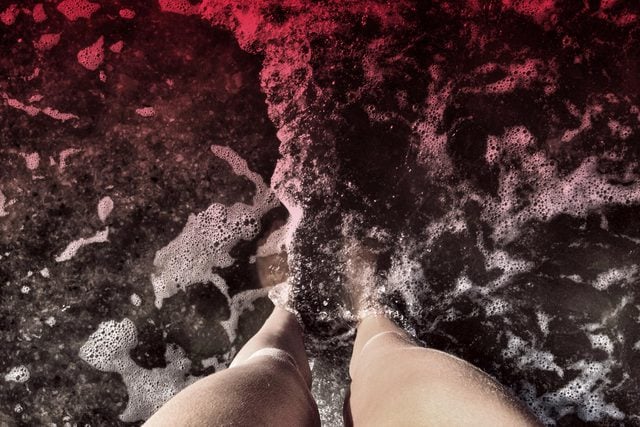
Nicole Moore was walking around in waist-deep water at a beach in Cancún, Mexico. It was the last day of January 2011, and the 39-year-old nurse was vacationing with friends from her exercise group from Orangeville, Ontario, a small town north of Toronto.
But at that moment, she was alone. She’d just finished playing beach volleyball, and while the other guests headed back up to the hotel for lunch, she enjoyed the warm water and splashed the sand from her body, the result of some dramatic volleyball saves. She didn’t realize it, but this simple action was creating a disturbance in the sea.
Nicole looked up and glimpsed two people on Jet Skis waving at her and yelling in Spanish. She waved back and laughed, thinking they were having fun.
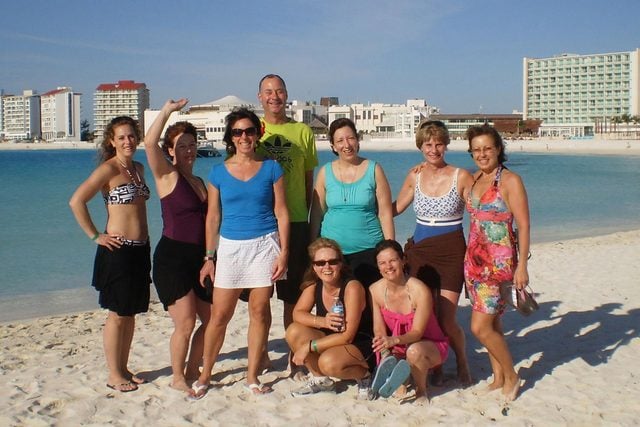
What she didn’t know was that they were calling for her to get out of the water. They’d seen two bull sharks, and they were trying to warn her while attempting to scare los tiburones back into the deep. One shark did leave, but the other proved more persistent. Instead of turning out to the boundless ocean, it veered in toward the shore.
The Jet Skiers yelled once again to Nicole. Only then did she realize something was wrong.
Nicole pivoted toward the beach and began to wade in. She felt a bump. What was that? Then realization. Before she could react, the shark ripped into her left thigh, its barbed teeth tearing into her flesh, down to the bone. The shark yanked away more than a foot of skin and muscle from Nicole’s leg. The water was instantly ablaze with billowing, bright red blood.
Though Nicole felt no pain, she knew how much trouble she was in. She needed to get out of the water. But the shark had destroyed her left leg, leaving it useless. She started using her arms to propel herself to shore, struggling to move forward in the water.
As she did so, the shark circled her, then lunged, clenching her left arm in its jaws.
“No!” she screamed.
The shark had her entire arm locked in its mouth, and it started to pull her underwater.
Is this the end? Is this the way my children will lose their mother? That’s what flashed through Nicole’s mind.
[pullquote] Summoning whatever strength she had left, Nicole raised her right fist and smashed it down on the shark’s nose. [/pullquote]
She caught a glimpse of her attacker’s lifeless black eyes. So penetrating, so indifferent. The massive head looked at her, gums pulled back, teeth showing.
Summoning whatever strength she had left, Nicole raised her right fist and smashed it down on the shark’s nose. The shark let go and swam away.
Nicole was left flailing in a sea of blood, suffering from shock and trauma and in danger of losing consciousness. Her left arm was hanging, barely there. Her left leg wouldn’t move.
One of the Jet Skiers accelerated toward Nicole, who was close to slipping beneath the waves. He reached out for her. Grabbing her right hand, the Jet Skier gunned his machine and towed her to shore, leaving a trail of blood in the water.
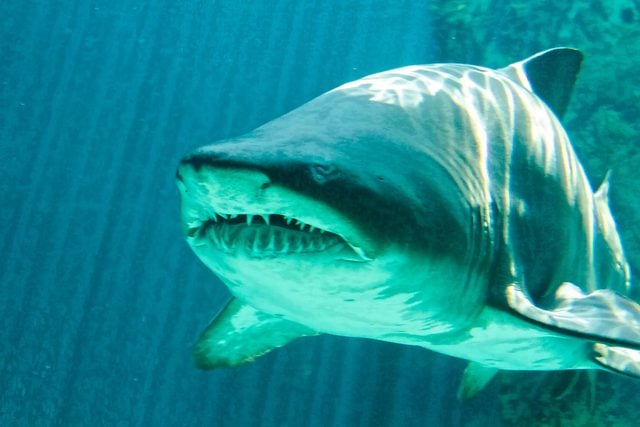
The Jet Skier beached his machine, jumped off, and pulled Nicole onto the sand. A crowd formed, talking in Spanish and English. Nicole, still conscious, took medical inventory of herself. She pushed at the sand and raised her head and shoulders ever so slightly to look down at her leg, then her arm. “Help me,” she gasped as her head fell back to the sand. All she wanted to do was surrender to her exhaustion. But her medical training told her not to give in to a slumber that might be her final goodbye.
“Talk … to … me!” she appealed in a fading voice. “Keep me awake …”
She’d lost so much blood that breathing was nearly impossible. Her heart couldn’t pump enough to her lungs, and if blood didn’t get to the lungs, the oxygen exchange wouldn’t happen, which would cause respiratory distress. A stream of blood squirted from her leg, jetting a foot into the air every time her heart beat.
One bystander, an American, dropped to his knees and reached around her leg. He applied pressure to the artery with his big hands, restricting the spewing blood.
“My arm …” Nicole gasped. “I need a tourniquet.”
Two young women—nurses—yelled out: Does anyone have a string? A man ripped the tie string out of his shorts and handed it to one of the nurses, and she created a tourniquet for Nicole’s chewed-up arm.
A bystander whispered, “She’s going to die. You don’t lose that amount of blood and survive.”
Yet the nurses kept talking to Nicole, trying to keep her awake.
For Nicole, time slowed down. She thought about her two young daughters. She’d never see her kids, her husband, her father again. She saw a pure bright light. Enveloping. She was getting ready to die on the beach, covered in sand and sweat and blood.
Then a siren blared.
By the time paramedics rushed Nicole through the hospital’s emergency doors, her vital organs were shutting down, she’d lost consciousness, and she was no longer able to breathe. The ER staff took over, racing against the clock to keep Nicole alive. During an eight-hour operation, the team inserted a central line directly into her heart and pumped in unit upon unit of blood and blood product to keep her heart working.
A List of Troubles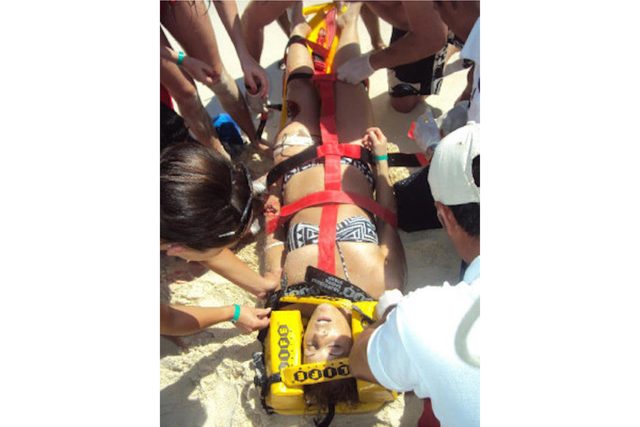
When Nicole regained consciousness, she was lying in bed. She was on a breathing machine and had a tube down her throat. Nicole would learn that the chunk the shark had ripped from her thigh had been found on the beach, brought to the hospital by her friends, and surgically reattached to her leg. But the procedure had been completed without attaching the flesh to a vein that could provide blood flow, which meant it would inevitably die off. Her arm was also badly torn, and on the second day, her hand was beginning to turn black.
Her list of ills continued: She had so many toxins coursing through her body just from the trauma itself. She was dehydrated, with an awful headache. She felt heavy, lethargic, fatigued. And she was in agony. But she was alive, and soon the breathing tube would be removed.
A friend had called her husband, Jay, and father, Alberto, in Toronto shortly after the attack, and now they had arrived. When Jay entered her room, he fought back tears. Then, to lighten the moment, he told Nicole, who’d been pestering her reluctant husband about getting a puppy for the girls, “OK, you can have your dog!”
Dangerous Days
On February 5—day six of her ordeal—Jay arranged for Nicole to be flown via medical jet to Toronto, where she would be treated by Dr. Laura Snell, a respected specialist in plastic and reconstructive surgery. She was joined by Dr. Andrew Fagan, a self-confessed “surfer dude” who had a special interest in the case. “What amazed us was seeing the teeth marks on her bones,” he said.
The doctors removed her bandages and saw the decay—and even some seawater and sand mixed in with the bandaging. The smell of pus and bodily fluids was overwhelming. The fact that the flap attached to Nicole’s leg had no blood supply and was simply rotting away shocked the doctors. And the discolored fingers did not bode well for saving her arm.
In the operating room, the two doctors debrided the wounds, removing dead, damaged, and infected tissue. They were disturbed to see that there was no blood supply to the arm past the point where most of the injury was. The medical team removed the dead flap sutured onto Nicole’s leg and replaced it with a large dressing. Then Dr. Snell released the sutures in Nicole’s arm in order to relieve some of the pressure from necrotic tissue. It took gallons of saline to wash out the wounds, just to get rid of the sand and debris.
Nicole was in bad shape, and Dr. Snell was surprised that she was able to sit up and talk soon after the operation. More impressive, Nicole’s mood was extremely positive. No matter what bad news Dr. Snell threw at her, she’d reply, “OK, what do we do next?”
Meanwhile, Nicole’s two children, Tia and Ella, ages seven and six, were with Jay’s parents. One snowy day, they brought the girls to see Nicole. “I was worried it would be too traumatic for them,” Nicole later recalled. “But they walked in, and it was, ‘Mommmmmy!’ Big hugs. Within an hour, they were in bed with me, snuggling.”
On February 8, Nicole went into the operating room for the third time since arriving in Toronto. During a ten-hour operation, her doctors took tissue from her right leg to cover her left femur. The surgical team was pleased with the outcome. But they knew a graft could be rejected.
Usually a rejection comes within the first 48 hours. And so by day three, hopes were high. Day four came and went. So did day five.
But then day six arrived. There was no circulation in the affected part of the leg. Nicole went back to the operating room, where doctors spent hours trying to save the transplant. But the doctors had to face a disquieting fact: The operation had failed.
Time to Move On
The bad news finally broke Nicole’s spirit. “I was devastated, crushed,” she recalled. “And I just thought, ‘Can anything else go wrong?’ I cried and cried and said I didn’t want visitors anymore. ‘Just leave me alone,’ I told everyone.”
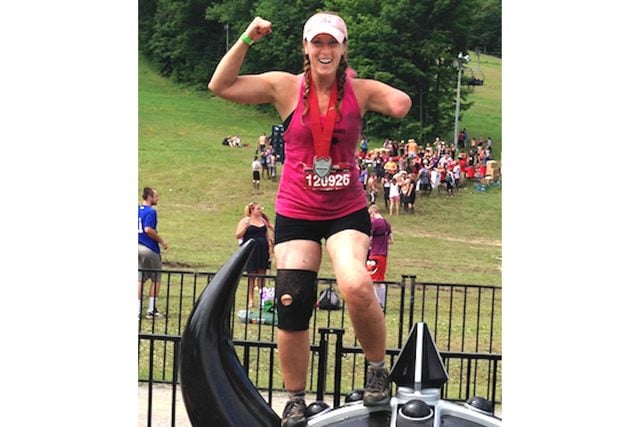
The next morning, she awoke with a heavy heart. She gave herself a pep talk and considered all the people helping her, encouraging her, propping her up. “When I couldn’t carry myself, it was other people who lifted me up,” she later said. She saw the photos that friends had sent her on the walls, the scrapbook pages from her kids, cards, angels, and lots of art. One friend had brought her a huge container of candy sharks, and it had become a ritual: Visitors had to eat—or attack—one of these sharks when they came.
On February 22, the doctors did another tissue transplant on Nicole’s leg in the hope of keeping infection at bay and nurturing tissue growth. They addressed her arm once again and saw more tissue rotting away. They concluded that amputation was inevitable.
Nicole remained calm. “This is my injury,” she said. “I have to get better.”
On March 4, Nicole’s arm was amputated. Shortly after that, she began tentatively walking with a crutch. Soon she was able to get to the bathroom and have a shower. And then she was pushing to go home.
On March 25, she was discharged from the hospital. But before she could get home, she had one more stop: a rehabilitation center. In six days, Nicole was weaned from her pain medications. She started to walk with a cane and learned to climb stairs. Nicole still had a hole in her leg and a painful left-arm stump. But finally, 60 days after the shark attack, she was ready.
Surprise at Home
April Fools’ Day. When Tia and Ella got home from school, Jay said he had a surprise for them and sent the two off to search for it. They eagerly ran in and out of various rooms, following their dad’s clues. But they came up with nothing.
“April Fools’!” Jay finally called out.
“Oh, man,” the girls responded in disappointment. “We thought you got us the Nintendo we wanted.”
And then the girls headed for the kitchen, where the real surprise awaited them—their mother. “It was,” says Nicole, “one of the most precious moments of my life.”
Nicole went on to face a strenuous rehab routine and endure several more operations to repair her leg. Like most amputees, she suffers from phantom pain, which so far has prevented her from wearing her prosthetic arm.
And yet, as beat up as she was, Nicole has not stopped moving. Today, she works with several organizations, both to support survivors of shark attacks and to conserve the world’s dwindling shark populations. She is back at work as a nurse, and she has run in the Warrior Dash, a challenging obstacle course race through swamps and across mud-caked back roads.
“I believe that we have the choice as to how we face life. Live it or sit back and let it pass you by,” she says. “I, for one, say bring it on.”